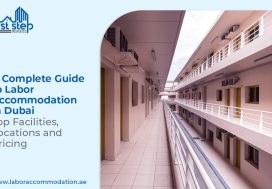You can definitely fix training, payroll and schedules—and still lose your best employees. What you can’t’ fix overnight is the place where they are going to sleep. For large segment of front-line and migrant workers, the bed space of a worker is where the dignity begins or ends. When staff housing is unsafe, cramped, hot, cold or isolating can erodes moral, take away trust and silently turn your loyal workers into flights risks.
Increased turnover rates might not be due to salary, the perceptions of respect, safety and wellbeing also matter a lot. A recent research shows that when employees feel their basic needs like decent living conditions, health and safety are ignored, their willingness to work for a particular company quickly declines. Health, safety and working conditions are the top reasons due to which the companies face high turnover.
This simple guide will assist you on how you can fix fissues before it gets too late.
The impact of Compromised Living Conditions of Workers
A worker who is living in a confined, overcrowded room with poor ventilation and lighting, broken locks or insecure storage for their wages or Identity documents, goes to work every day badly impacts on his work. He already feels exhausted and less motivated. On the other hand workers who are employed in hazardous industries—failure to health safety measures and hazardous working environments drive them to leave their jobs voluntarily. When a worker’s home offers a risky environment—his loyalty evaporates.
The Ultimate Consequences of Poorly-Managed Staff Accommodation
The impacts of bad living conditions are measurable. The high turnover rates drain companies’ budgets, disrupts their workflows, they have broken teams with reduced institutional knowledge that increases accidents. Remember, the human cost is heavier—workers who lack social network in a host city, bad labour camps can create a sense of isolation and helplessness that drive workers leave their current companies on the first job opportunity whenever they get.
How to Fix Labor Accommodation Issues
In fixing these challenging issues, you have to take a start with “fixing their housing”. It is not optional, it’s crucial.
- Upgrade their Living Standard and Enforce: Make a clear checklist that can include space per person, safe electrical wiring, functional locks, sanitation, fire exits and privacy options. All these little improvements can show you care about your workers’ safety. Remember compliance is the floor—not the ceiling.
- Build Dignity through Community and Privacy: even small upgrades like lockable storage, curtains, communal cooking areas, quiet hours can turn a dorm into a community. Workers stay where they feel cared, seen and well-respected.
- Measure What Really Matters: Enhancing the quality of living in a labor accommodation helps you reduce turnover rates. Try to track the link between the accommodation issues and absenteeism, short-term notice resignations and grievance handling systems. When you find the link with data, invest to solve the housing issues and stop considering them as a cost and it will start looking like measurable factors with measureable ROI.
- Being Transparent and Partner with Local Bodies: Partner with approved and certified labour accommodation providers like First Step Properties to ensure a standardized living for your valuable workforce. For migrant workers, you need to identify safe storage to guarantee the safety of their identity documents so they can move freely without the burden of any legal risk.
- Extend Your Support Beyond Walls: Essential facilities like reliable transport, regular mental health checkups, family contact-time and access to communication—everything matters. Workers who can frequently communicate with their families in their home countries without fear and whose personal documents are safe and secure are more likely to be stable and retain on their jobs for a longer time span.
Fixing the staff housing issues is not just a one-day project, it is a long-term strategy which needs to be an on-going effort made from the employer to provide enhanced living conditions to ensure workers’ wellbeing. When your current workers will see their colleagues are treated with dignity, they become their advocates. You will also notice few tragedies and complaints, turnover drops and productivity enhances.
Conclusion
If you are an employer and are facing pressing challenges related to labor accommodation—put yourself in your workers’ shoe—literally. Inspect, invest and measure. Fixing staff housing issues isn’t just humane, it’s a wise strategic move. Addressing the issues now and fixing them one by one—you will develop a happy and loyal workforce.









